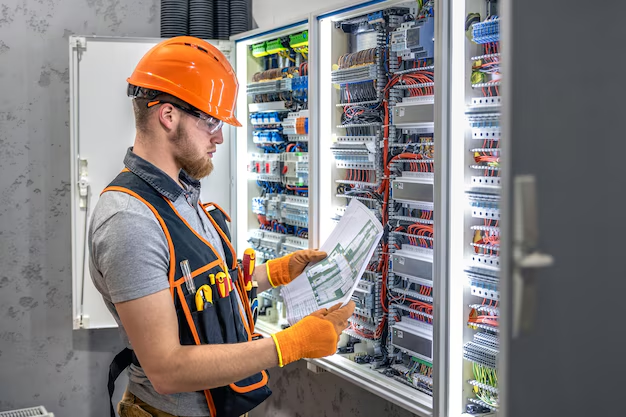How Much Generator Power Do You Need to Keep Your Refrigerator Running Smoothly?
Imagine you're in the middle of a power outage, and the first thing that comes to mind is the food in your refrigerator. Melting ice cream, thawing meat, and wilting greens are something no one wants. But how do you ensure your refrigerator keeps ticking when the lights go out? One dependable answer is a generator. But this leads to an essential question: How much generator power is needed to run a refrigerator? Read on to explore the essential aspects of this question, touching on energy efficiency, practical tips, and considerations for maintaining the essentials during a power outage.
⚡ Understanding Your Refrigerator's Power Needs
Watts and Appliance Labels
Before you can determine generator power requirements, you need to understand the electrical needs of your refrigerator. Refrigerators generally have a power label placed on the back or on the door’s edge somewhere inside, telling you how many watts the appliance needs to run. This wattage includes the running watts (continuous power required) and sometimes the starting watts (the surge power required to start the compressor).
- Running Watts: Most modern refrigerators use between 100 to 400 watts on average.
- Starting Watts: This can be two to three times higher than the running watts, influenced by the appliance age and model.
Factors Affecting Power Consumption
A refrigerator's actual power consumption can vary based on numerous factors:
- Size and Capacity: Larger fridges require more energy.
- Age and Model: Older models might be less efficient compared to modern designs.
- Usage Patterns: Frequent door opening and adding warm items can increase energy needs.
- Environmental Factors: Ambient room temperature and ventilation can impact consumption.
Calculating Power Needs
You can determine your refrigerator's energy requirements with a little calculation work. For a simple guess:
- Calculate Watt-hours (Wh): Multiply the running watts by the number of operation hours (e.g., 24 for an entire day).
- Factor in Starting Watts: Knowing the starting watts is essential as your generator must better these peaks when turning on the appliance.
🔌 Choosing the Right Generator
Generator Types and Wattage
When selecting a generator, you should aim for a model that can provide at least the starting wattage of your refrigerator. Consider these common types:
- Portable Generators: Typically offer between 1,000 to 10,000 watts and enclose easy mobility and storage.
- Inverter Generators: Known for fuel efficiency and producing reliable, stable power suitable for sensitive electronics and appliances.
- Standby Generators: Permanently installed and provide robust power capacity, automatically kicking in during outages.
Matching Generator Power to Appliance Needs
Your selected generator must handle all running and starting wattages of connected appliances. Here's a strategic breakdown:
- Calculate your total watt usage, including other appliances you wish to power during an outage.
- Ensure your generator exceeds this sum, allowing a buffer for increased demand.
Generator Efficiency Tips
- Overloading Risks: Continuously running a generator at full capacity can apply excess wear.
- Fuel Considerations: Keep sufficient backup fuel for operational continuity.
- Proper Ventilation: Operate in ventilated areas to manage harmful emissions.
🌿 Energy Efficiency & Consumption
Enhancing Refrigerator Efficiency
Optimizing your refrigerator's energy consumption can extend generator runtime and conserve fuel. Below are some meaningful strategies:
- Temperature Settings: Set between 37–40°F (3–5°C) for the refrigerator to reduce strain.
- Door Seals: Ensure they're airtight to avoid energy waste.
- Cooling Loads: Maintain optimal capacity—neither too empty nor overly packed.
The Role of Insulation
Effective insulation can substantially affect how well a refrigerator maintains cool temperatures during power interruptions. Consider these techniques:
- Thermal Mass: Pack bottles of water to stabilize temperatures.
- Added Insulation: Use blankets or foil covers to reduce heat gain.
🔋 Practical Tips During Outages
Prioritizing Essential Appliances
During power outages, it's crucial to prioritize vital appliances. Many household appliances fight for limited generator power. Here’s where planning helps:
- Evaluate Essential Needs: List critical devices like lights, radio, or chargers.
- Plan a Power Schedule: Allocate times when specific appliances must run.
Preparing for Outages
Preparation reduces stress and maximizes efficiency during actual outages:
- Regular Maintenance: Keep your fridge and generator serviced.
- Fuel and Spare Parts: Maintain a stockpile for emergencies.
- Test Runs: Regularly practice running appliances on generator power.
📝 Key Takeaways for Practical Understanding
Here's a snapshot of what you'll need to remember in a pinch:
- Determine Appliance Needs: Know your fridge’s running and starting watts.
- Choose Suitable Generators: Ensure your generator handles all appliance demands.
- Improve Efficiency: Implement strategies like optimal temperature settings.
- Prepare & Practice: Regularly test equipment and understand operational processes.
In conclusion, knowing how much generator power is required to run your refrigerator is like having a safety net tossed during an electrical instability storm. Understanding your appliance’s energy needs allows you to choose a versatile and efficient generator, making you equipped to power through outages with confidence. In true essence, this knowledge is foundational in blending modern-day convenience with unfaltering reliability—a deliberate choice in energy efficiency and preparedness. Enjoy the security and peace of having an uninterrupted power solution for your home essentials.
